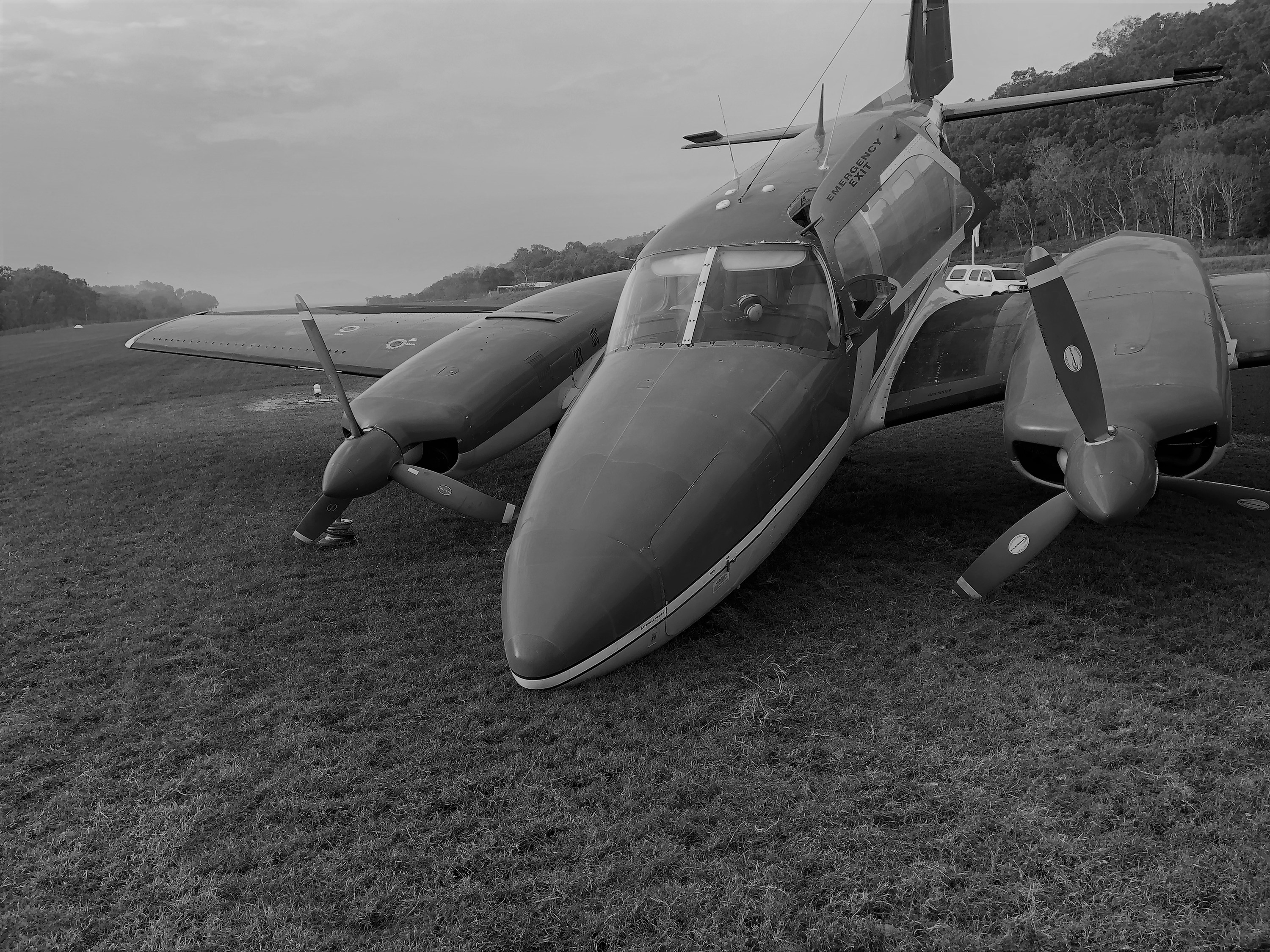| Occurrence Briefs are concise reports that detail the facts surrounding a transport safety occurrence, as received in the initial notification and any follow-up enquiries. They provide an opportunity to share safety messages in the absence of an investigation. |
What happened
On 27 November 2018, a Piper PA-31 was operating a charter flight with one pilot and three passengers on board to Palm Island, Queensland.
After landing, the nose wheel tyre was punctured by foreign object debris (FOD)[1] on the runway. The nose wheel began to vibrate resulting in the pilot braking with caution and applying back pressure[2] to alleviate the pressure on the nose wheel. The rubber on the tyre started to disintegrate and the rim of the wheel dug into the soft asphalt, caused by the extremely hot conditions.
The tyre became caught between the rim and the fork of the nose gear, which acted as a brake and rudder causing the aircraft to veer to the right and off the runway resulting in a nose gear failure. The pilot shut down both engines to reduce the possibility of debris becoming projectiles and to minimise damage to the aircraft before both propellers struck the ground unpowered.
A screw is suspected to have caused the tyre puncture as nuts and bolts were observed during the runway inspection after the occurrence.
Figure 1: Damage sustained to the aircraft after landing

Source: Operator
Safety message
This occurrence highlights the importance of carrying out regular runway inspections as FOD has the potential to affect aircraft during critical phases of flight. Boeing, in Foreign Object Debris and Damage Prevention, estimate that FOD damage costs the aviation industry $4 billion per year.
All aerodromes are encouraged to have an active FOD management program in place. Aerodrome staff and pilots are reminded to keep an active lookout and retrieve any identified FOD before it becomes a hazard.
Further information about FOD management at aerodromes can be found on the Australian Airports Association website: Foreign object debris.
About this report
Decisions regarding whether to conduct an investigation, and the scope of an investigation, are based on many factors, including the level of safety benefit likely to be obtained from an investigation. For this occurrence, no investigation has been conducted and the ATSB did not verify the accuracy of the information. A brief description has been written using information supplied in the notification and any follow-up information in order to produce a short summary report, and allow for greater industry awareness of potential safety issues and possible safety actions.
__________
- Foreign object debris: Any object, live or not, located in an inappropriate location in the airport environment that has the capacity to injure airport or air carrier personnel and damage aircraft.
- Back pressure: The application of back pressure to the yoke to slowly raise the aircraft’s nose and increase its angle of attack.


